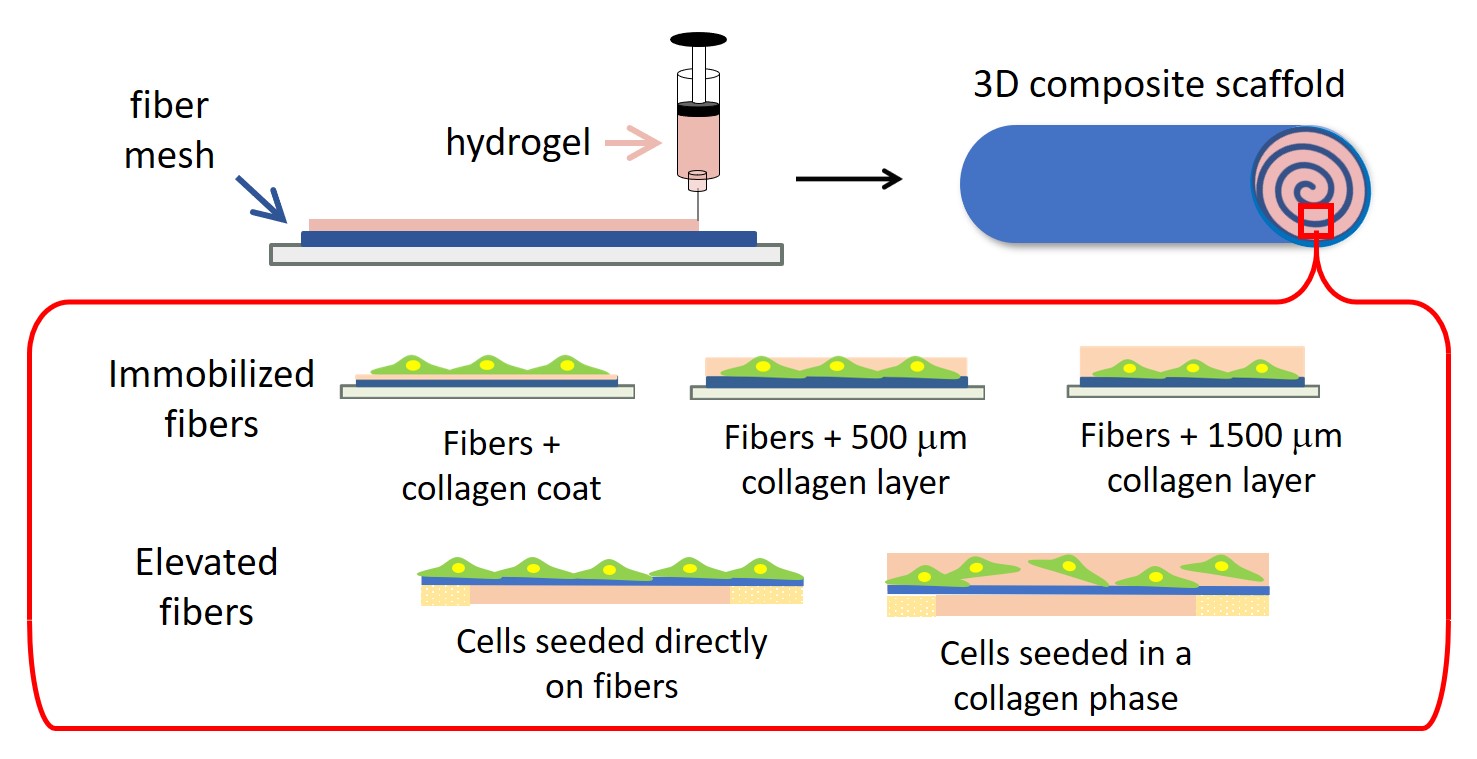(609c) Evaluation of Cell Viability and Morphology in Fiber-Hydrogel Composites for Ligament Tissue Engineering
AIChE Annual Meeting
2020
2020 Virtual AIChE Annual Meeting
Regenerative Engineering Society
Regenerative Engineering: Advanced Biomaterials for Complex Tissue Regeneration II
Thursday, November 19, 2020 - 2:30pm to 2:45pm
In the first set of studies, we prepared thin layers of electrospun fibers on rigid supports to assess how the placement of cells atop a thin collagen gel coat and beneath 0.5 mm and 1.5 mm of collagen gel affects cell viability and morphology. Results indicated that cells attached to and spread along the supported fibers in all cases, but the thicker (1.5 mm collagen) layer diminished cell metabolic activity relative to the other two configurations. We attribute this to diminished availability of nutrients and oxygen. In the second set of studies, thin layers of electrospun fibers were elevated, and the underside filled with collagen gel (to better mimic the mechanical properties of composites). Cells were then seeded directly atop the fibers or combined with collagen and deposited as a 0.5 mm layer gel layer. For the first case cells were able to attach and spread along fibers, while for the second case some cells were able to find and spread on the fibers, while other cells remained rounded up within the collagen layer. Nevertheless, cells within the entire composite remained viable.
Together, these data show that the thickness of the composite can impact cell metabolic activity while the location of the cells (i.e., on the fibers, in the gel) can influence morphology, both of which we anticipate will affect cell proliferation and ligament tissue formation. As a next step, we are currently studying cell migration in response to the chemoattractant FGF-2. Our next step will be to present ligament-inducing morphogens (e.g., GDF-5) within these fiber-hydrogel composites to evaluate their ability to guide tissue formation.
